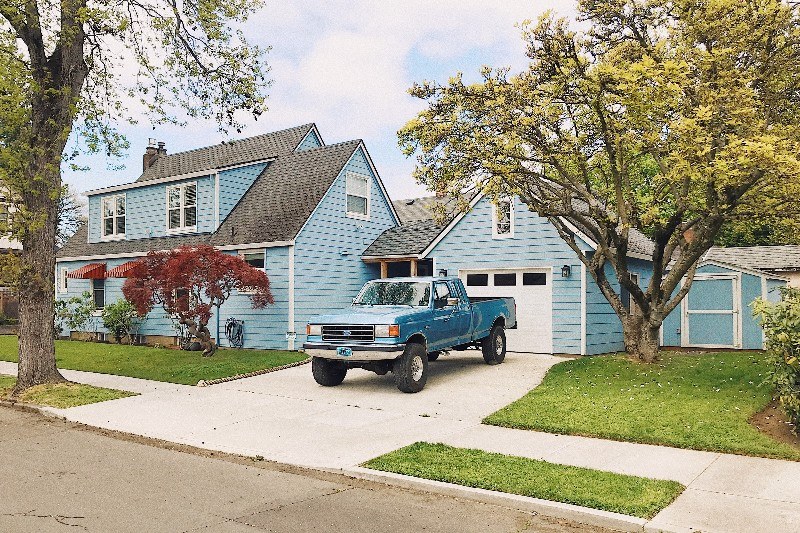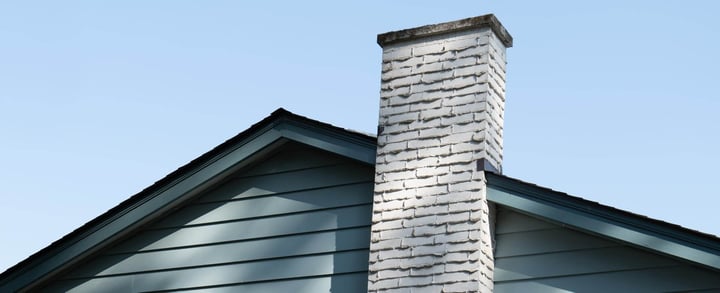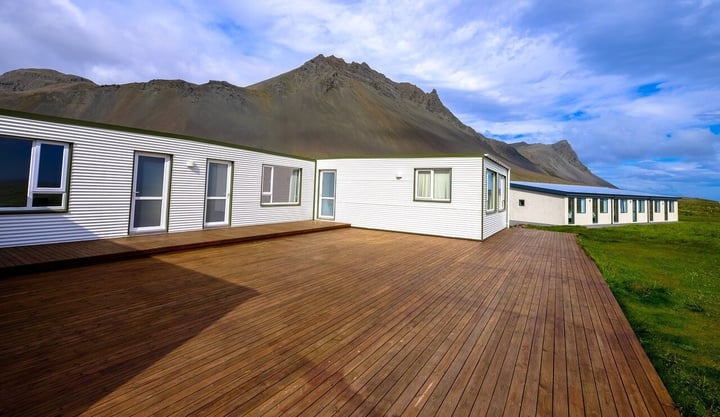
Am I Ready to Buy a New House? The Questions You Need to Answer
Posted on Jul 14, 2022
The housing market may have been nuts, but the rental market last year wasn't much better. Millions...

Posted on Jul 14, 2022
Former renters (and some existing homeowners too) may have not given much thought to property maintenance. However, keeping your property in good condition helps you avoid expensive, preventable repairs later - and also helps you profit more in the long run, if you don’t need to knock $2,000 off your home’s eventual selling price just because clogged gutters caused a leak in your roof.
If you’ve always had a landlord take care of your home, though, you might not be familiar with the regular maintenance required.
Here’s your maintenance checklist that will cover the whole year.
Approximately 2,900 dryer-related fires are reported each year, and the majority of these are caused by a clogged dryer vent. It’s a more common problem than most people realize, and it can lead to your dryer working inefficiently as well. If your clothes have ever come out of the dryer still moist, this could definitely be the culprit. Having an expert come by to inspect and clean the dryer vent once a year will only set you back about $150.
“Dryer vent cleanup has been lately stressed as essential in the monthly upkeep of the property, which in my professional opinion is a bit misleading. Dryer vents should be cleaned every 6 months or a year. Anything earlier is just a waste/duplication of efforts,” says Abe Breuer, CEO and owner of VIP To Go.
Air filters are often left unchanged for far longer than they should be. However, the filter’s purpose is to trap the debris, dirt, pet hair, etc. circulating through your home and keep the air clean.
If you don’t change the filter, you can also be increasing the strain on your HVAC unit. This can lead to the system breaking down sooner - but it also has to work harder to pull air, leading to increased heating/cooling costs. Filters cost $10-$20 each and they're fairly easy to replace - no additional tools needed.
"HVAC filter fails can be included in the list of most common 'set and forget' maintenance fails. Just think of the dirt that gets built up on the floor and other surfaces of your house when you don’t clean them. Similarly, dirt can be trapped in an HVAC filter too. To keep your HVAC unit filter running smoothly, you must keep all the dust and dirt away from the system," explains Alex Platt, Owner of The Platt Group.
Your HVAC system is not something that should be ignored and left alone. If problems occur, you're left freezing in winter or melting in summer - and a total replacement can cost thousands of dollars (maintenance can save you a lot of money here!).
An HVAC technician can do both a checkup as well as servicing - they should check the ductwork for signs of damage, and clean and service the furnace and A/C compressor.
Smoke and carbon monoxide alarms are both incredibly important for preventing deadly accidents - yet many homeowners become lax about their care and see them as more of a noisy nuisance than a safety tool. According to the Department of Fire Services, “40% of the fire deaths that occur each year in the U.S. take place in the 4% of homes without working smoke alarms.”
In other words, alarms can’t help you if they don’t work. Not only do you want to change out the batteries twice a year - you should also test them once a month. Keep in mind that fire alarms have a 10-year life expectancy. After that, they should be replaced completely.
If you have a chimney, having it regularly inspected is important - even if you don’t use it that often (but especially if you use it often). Creosote, a residue formed from burning fires, gradually builds up on the sides of your chimney. It is highly combustible so if left unattended long enough, it can cause a chimney fire itself.
If obstructions occur (like old bricks collapsing and getting stuck at the top), carbon monoxide can also leak into your home without you realizing, since it’s an odorless gas.
A chimney inspection can ensure your chimney is free of debris and blockage and safe for usage, and an inspection typically costs from $300-$600 (which includes the cost of cleaning).

Cleaning your fridge’s condenser coils helps keep your energy costs down. Because they’re out of sight, they’re often out of mind - but vacuuming off these coils can reduce your refrigerator’s energy consumption by 11%. All you need to do is safely move the fridge away from the wall and run a brush through the coils, vacuuming up whatever debris is shaken loose.
“It's so easy to forget to clean your refrigerator condenser coils at least once every six months. These coils are located on the back of the fridge, usually at the bottom. When they become clogged with dust or pet hair, they can't properly release heat. This makes your compressor work harder and longer than it should - wasting energy and shortening the lifespan of your refrigerator,” warns Lenny Brickowsy, an ACHP-certified handyman and consultant at Juliei Salone. “Clean the can with a brush, duster, or a vacuum.”
Once the grout between your tiles becomes cracked and/or moldy, it’s time to redo the grout. Although this is largely an aesthetic issue, grout and tiling serve a purpose of sealing off the wall and drywall, protecting it from moisture. Once grout becomes porous, it can allow water to reach the drywall - and eventually destroy it. Regrouting is a fairly easy DIY job (cost: under $100) - or you can hire someone to do it (cost: $200+).
Over time, the natural minerals in your water can build up and prevent the water in your shower from flowing freely. By removing the showerhead and cleaning the sediment, you can have a more consistent spray. Eliminating blockage can also remove bacteria and mold that can grow there. It’s possible to do a quick clean of a shower head without removing it by using vinegar and a plastic bag.
To prevent slow draining, it can help to clear your drains annually (or whenever things seem to be building up) with a drain snake. This will typically involve removing the P-trap and access drain. You can do this with your bathroom sinks as well as your kitchen sink.
If you have a leak in your bathroom, you'll notice it - right?
Not always. There are two commonly missed culprits: leaks occurring under your sink, and leaks occurring in your toilet. If your sink covers a cabinet, check inside for spots of moisture or discoloration that could be caused by water.
Your toilet's tank can leak clean water into your toilet bowl. While this won't put water where it doesn't belong, it can run up your water bill. It's possible to check for this by adding a drop of food dye to your toilet tank (don't flush). If the color appears in the bowl, you have a leak (that is pretty easy to fix, luckily!).
Your appliances are an important part of your home. Without them, you can't wash your clothes or your dishes. But many homeowners take a "use it and leave it" approach to their appliances that can have them wearing out sooner rather than later. Households have a variety of appliances and types of appliances - rather than covering them all here, we recommend that you check with your manufacturer's instructions for best upkeep.
"Many new homeowners neglect their appliances. Cleaning the dishwasher filter, flushing the water heater, cleaning the dryer vent line, and cleaning the washing machine drum are all examples of commonly neglected forms of appliance maintenance," explains Pete Evering, Business Development Manager for Utopia Management.
If your home exterior is painted wood, check for chipped paint, wood rot (look for swelling and discoloration), mold, and dirt. Leaving these elements on your home can allow salt and chemicals to eat away at the paint. Power washing can help to remove debris and mold from growing on your home.
“In my experience, exterior paint is something that tends to be overlooked until it becomes a real eyesore. This can be a problem since exterior paint does actually help protect a home from the elements — including potential moisture damage, insect infestations, and rot,” notes Andre Kazimierski, CEO of Improovy Painters Hinsdale.
It's a good idea to check your roof once a year for damage and missing shingles. Missing shingles are one of the leading causes of roof damage because their absence allows outside elements to reach the inside of your home’s structure. Check both the outside of your home (the visible shingles) as well as the interior (your attic, if you have access) - it may be possible to see signs of water penetration there, indicating an issue.
With proper maintenance, a deck can last many years. With poor maintenance, deterioration will happen quickly. Applying a sealant that keeps the wood safe outside elements is key - and this should be part of your home’s annual upkeep. You can stain your deck wood at the same time, helping to maintain a bright, fresh appearance.

Cleaning your windows is an important part of home maintenance, and we don’t just mean wiping down the window panes. It’s important to carefully clean every reachable component of the window with a gentle cleaning solution - the sash, casings, tracks, and hardware. Also, look for condensation between your window panes - this typically happens when a seal around the window has broken, which will make the window less resistant to airflow and increase your costs to heat and cool the home.
“It's important to know how to properly maintain the windows on any property you own. This is one that may slip under your radar since tasks like this are usually seasonal. You won't have to worry about it until you've lived in the place for a few months, which can make it jarring when it comes up on your to-do list," notes Leonard Ang, CEO of iPropertyManagement Leasing.
Checking your trees for signs of illness and pests can help prevent a dead tree from appearing on your property. Did you know that it costs between $200 and $2,000 to remove a dead tree - and then you’ll need to buy another tree ($100-$1,000)?
By eliminating dead or dying branches through pruning, you help strengthen the tree, creating a healthier structure.
Checking for problems will also help you mitigate liability and risk (if you notice a large, dead branch hanging over your roof, you can remove it before it potentially does serious damage to your house).
Reseeding your lawn helps to maintain its vibrancy. Mature lawns thin out over time, especially with heavier usage. And re-seeding, or overseeding, your lawn can also help to maintain genetic diversity there. Newer grass strains are often bred to be greener and more drought tolerant. The best time to reseed is late summer to early fall for Northern states, and late spring for Southern states.
Small cracks in your driveway may not seem like a big deal, but taking care of them as part of your annual maintenance will help improve your home’s aesthetic appearance - and also help prevent deeper, larger cracks that can occur if the freeze/thaw cycle is allowed to repeat itself. It’s also easier to seal cracks while they’re still small and manageable.
Look around your home for signs of insect and pest activity. Insects often create mud burrows, visible tracts in wood, sawdust, and more, while larger pests (like mice) will enter through holes that can be as small as the size of a quarter. Take a look for gaps where your doors (including your garage door, if relevant) meet the floor, as mice will often enter by getting around door sweeps.
"As a part of routine pest prevention, our technicians routinely inspect properties and fill new entry points for rodents and insects. If a property goes without routine inspection and pest prevention, more and more entry points form over time with changes of seasons and weather patterns," explains Megan Wede, co-owner of Done Right Pest Solutions. "It's never too late to start caring for the smallest aspects (that can become big stressors) of homes."
Gutters are often forgotten about, yet they can lead to expensive rot and leaking issues for your roof. Even if there aren't any trees above you shedding leaves, debris can quickly become lodged in gutters and prevent water from exiting away from your home. Once winter comes, the water can turn into ice and cause damage to the gutters themselves.
“Roof and gutter expectation is one of the key things that are rarely maintained by new homeowners. Roof and gutters usually don't require monthly maintenance and so are often forgotten about if forgotten about for long enough can lead to disastrous results,” explains Breuer.
“In my professional experience, I have seen quite a few homes having cracked roofs or algae growing on them and blocked/almost blocked gutters. The cracked roof can allow moisture to leak inside of your house damaging walls, and furniture and allowing the growth of mold which is expensive to deal with.”
If you live in an area that gets cold in the winter, you’ll want to winterize your irrigation system. Otherwise, water can freeze in the pipes and cause cracks and leakage. This involves shutting off the water supply, draining the system, and adjusting any controllers/timers so that they don’t launch into pre-programmed settings at the wrong time.
"One of the main winterization tasks that often get forgotten are blowing out one’s sprinklers - this can cause serious property damage if not completed. When you still have water in your sprinkler system and the weather gets to below freezing, your system will also freeze and likely burst - and replacing a sprinkler system is a costly ordeal," explains Nick Mueller, Director of Operations of HawaiianIslands.com.
It's easy to put off home maintenance, but ultimately this is something you should do in order to preserve the value of what is likely your largest asset (which you'll want to sell one day for maximum profit).
If you don't change your car's oil ever (cost: $50 on average) eventually your car's engine will break down (cost: $3,000 - $5,000). You wouldn't do that with your car, right?
Your house is a lot like a very complex and expensive car - without the wheels. Skip the small updates and maintenance now, and you'll end up paying more extensive repair bills later.
Subscribe to our newsletter to get essential real estate insights.

Posted on Jul 14, 2022
The housing market may have been nuts, but the rental market last year wasn't much better. Millions...

Posted on Jul 14, 2022
Is it the right time to buy a home? For many people, the answer is “yes.” Surprising though this...

Posted on Jul 14, 2022
When it comes time to sell your home, there are a lot of questions that pop up - especially if it's...